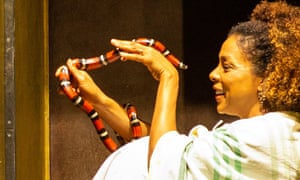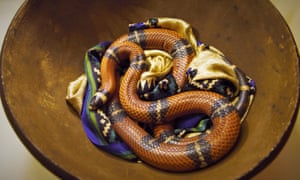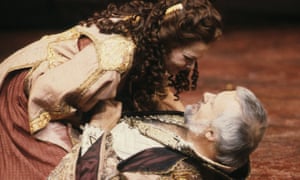Monday, December 30, 2019
Thursday, December 19, 2019
Study of the Ants
https://asunow.asu.edu/20170720-discoveries-asu-researcher-ants-brutal-lifehttps://www.google.com/search?q=name+of+the+ant+profession&sxsrf=ACYBGNTOrlflblf1UoavG5Lhujsvp0b1Nw:1576786300514&source=lnms&tbm=isch&sa=X&ved=2ahUKEwiLp9DawsLmAhVOBc0KHa-IAy8Q_AUoAnoECA8QBA&biw=1920&bih=911#imgrc=1QNCnLj1jg-gZM:&spf=1576786313388


Monday, December 16, 2019
Tuesday, November 26, 2019
Wednesday, November 20, 2019
Friday, November 15, 2019
Monday, November 4, 2019
Saturday, November 2, 2019
Tuesday, October 29, 2019
Friday, October 25, 2019
Thursday, October 24, 2019
Wednesday, October 23, 2019
Tuesday, October 22, 2019
Friday, October 18, 2019
Wednesday, October 16, 2019
Saturday, October 12, 2019
1:59:40! Kipchoge runs historic first sub-2 hour marathon | NBC Sports
1:59:40! Kipchoge runs historic first sub-2 hour marathon | NBC Sports
Wednesday, October 9, 2019
Wednesday, October 2, 2019
Monday, September 30, 2019
Monday, September 16, 2019
Friday, September 6, 2019
THE SONG IS NEITHER ONE US BY GLADYS KNIGHT
THE SONG IS NEITHER ONE US BY GLADYS KNIGHT
It's sad to think
We're not gonna make it
And it's gotten to the point
Where we just can't fake it
We're not gonna make it
And it's gotten to the point
Where we just can't fake it
For some ungodly reason
Just won't let it die
I guess neither one of us
Wants to be the first to say goodbye
Just won't let it die
I guess neither one of us
Wants to be the first to say goodbye
I keep wondering
What I'm gonna do without you?
And I guess you must be
Wondering the same thing too
What I'm gonna do without you?
And I guess you must be
Wondering the same thing too
So we go on
Go on together living a lie
Because neither one of us
Wants to be the first to say goodbye
Go on together living a lie
Because neither one of us
Wants to be the first to say goodbye
Every time I find the nerve
Every time I find the nerve to say, I'm leaving
Memories, those old memories
Get in my way
Every time I find the nerve to say, I'm leaving
Memories, those old memories
Get in my way
Lord knows it's only me
Only know it's only me that I'm deceiving
When it comes to saying goodbye
That a simple word that I just cannot say
Only know it's only me that I'm deceiving
When it comes to saying goodbye
That a simple word that I just cannot say
There can be no way, there can be no way
This can have a happy ending, no, no
So we just go on hurting and pretending
And convincing ourselves to give it just one more try
This can have a happy ending, no, no
So we just go on hurting and pretending
And convincing ourselves to give it just one more try
Because neither one of us
Wants to be the first to say
Neither one of us
Wants to be the first to say
Neither one of us
Wants to be the first to say
Wants to be the first to say
Neither one of us
Wants to be the first to say
Neither one of us
Wants to be the first to say
Farewell my love
Goodbye
Goodbye
Source: LyricFind
Songwriters: James D. Weatherly
Neither One of Us (
TIL I SEE YOU AGAIN SONG BY GLADYS KNIGHT
Published on Mar 28, 2014 - Til I See You Again IS THE NAME OF THIS SONG
Gladys Knight & The Pips were an R&B/soul family musical act from Atlanta, Georgia, active from 1953 to 1989. The group was best known for their string of hit singles on Motown's "Soul" record label and Buddah Records from 1967 to 1975, including "I Heard It Through the Grapevine" (1967) and "Midnight Train to Georgia" (1973). The longest-lived incarnation of the act featured Gladys Knight on lead vocals, with The Pips, who included her brother Merald "Bubba" Knight and their cousins Edward Patten and William Guest, as backup singers.
Gladys Knight & The Pips are multiple Grammy and American Music Award winners,and are inductees into the Rock and Roll Hall of Fame and The Vocal Group Hall of Fame in 1996 and 2001 respectively.
Gladys Knight & The Pips are accompanied by Neil Stubenhaus (bass), John Robinson (drums), Michael Lane (keyboards), Paul Jackson (lead and rhythm guitar). Written by Bunny Sigler and Marvin Morrow. Arrangements by Bubba and Gladys Knight, Bunny Sigler, Johnny Pate and Sam Dees.
Good-bye sounds like the end of the road to me
Even though I know you're coming back again
Nothing will be the same until then..mmm
Don't you worry 'bout me baby
While you're away
I'll be thinking of you each and every day
I'm not giving any love away
Oh no
I'm gonna wait right here 'till I see you again
My special friend
I'm gonna count the hours 'till I see you again
My special special friend
I'm gonna miss you baby
Ooh, 'till I see you again
Oh I know I'm gonna cry
When that train moves away
I'll remember the things that I forgot to say
But you know what was in my heart anyway
I get down on my knees
And say a prayer everynight while you're gone
And I'll bless the day when you get back home
And I'll no longer have to be alone
Oh not alone
I'm gonna wait right here,
'Till I see you again
You're my very special friend
I'm gonan count the hours
'Till I see you again
Oh I gotta see you baby
I, I'm gonna miss you baby
'Till I see you again
I've got to wait right here, oh, ooh
You're my very special friend
Hours, till I see you again
You, you you, you don't have to go baby
Oh babe, I know
You've got my love, you've got my love
Oh, the hour, 'till I see you again
Oh ooh, oh babe, my baby
'Till I see you again
Gladys Knight & The Pips are multiple Grammy and American Music Award winners,and are inductees into the Rock and Roll Hall of Fame and The Vocal Group Hall of Fame in 1996 and 2001 respectively.
Gladys Knight & The Pips are accompanied by Neil Stubenhaus (bass), John Robinson (drums), Michael Lane (keyboards), Paul Jackson (lead and rhythm guitar). Written by Bunny Sigler and Marvin Morrow. Arrangements by Bubba and Gladys Knight, Bunny Sigler, Johnny Pate and Sam Dees.
Good-bye sounds like the end of the road to me
Even though I know you're coming back again
Nothing will be the same until then..mmm
Don't you worry 'bout me baby
While you're away
I'll be thinking of you each and every day
I'm not giving any love away
Oh no
I'm gonna wait right here 'till I see you again
My special friend
I'm gonna count the hours 'till I see you again
My special special friend
I'm gonna miss you baby
Ooh, 'till I see you again
Oh I know I'm gonna cry
When that train moves away
I'll remember the things that I forgot to say
But you know what was in my heart anyway
I get down on my knees
And say a prayer everynight while you're gone
And I'll bless the day when you get back home
And I'll no longer have to be alone
Oh not alone
I'm gonna wait right here,
'Till I see you again
You're my very special friend
I'm gonan count the hours
'Till I see you again
Oh I gotta see you baby
I, I'm gonna miss you baby
'Till I see you again
I've got to wait right here, oh, ooh
You're my very special friend
Hours, till I see you again
You, you you, you don't have to go baby
Oh babe, I know
You've got my love, you've got my love
Oh, the hour, 'till I see you again
Oh ooh, oh babe, my baby
'Till I see you again
Category
Song
Thursday, September 5, 2019
Friday, August 30, 2019
Monday, August 26, 2019
USA's Ajee Wilson keeps hot streak alive in 800m Diamond League victory ...
USA's Ajee Wilson keeps hot streak alive in 800m Diamond League victory ...
Monday, August 19, 2019
Monday, August 5, 2019
Tuesday, July 30, 2019
Thursday, July 25, 2019
Tuesday, July 23, 2019
Monday, July 22, 2019
Thursday, July 18, 2019
Wednesday, July 17, 2019
Sunday, July 14, 2019
Saturday, July 13, 2019
Thursday, July 11, 2019
Wednesday, July 10, 2019
notre Dame restoration
https://artscanvas.org/arts-culture/the-artistry-behind-protecting-and-repairing-photographshttps://artscanvas.org/music/the-fight-to-save-an-italian-forest-prized-by-stradivarihttps://artscanvas.org/arts-culture/the-artistry-behind-protecting-and-repairing-photographs
https://artscanvas.org/arts-culture/british-artisans-preach-patience-for-frances-notre-dame-restorationhttps://artscanvas.org/music/can-listening-to-classical-music-help-kids-keep-calm
Lonnie Bunch to become the first African American to lead the Smithsonian Institution
Lonnie Bunch to become the first African American to lead the Smithsonian Institution
The founding director of the Smithsonian’s museum about African American history will now lead the entire system of museums and parks.
The Smithsonian Institution on Tuesday named Lonnie Bunch as its 14th secretary. He will become the first African American to lead the Smithsonian, which includes the world’s largest museum, education and research complex, with 19 museums and the National Zoological Park.
Bunch was the first director of the Smithsonian National Museum of African American History and Culture.
In an interview before the museum’s opening in 2016 with the PBS NewsHour’s Gwen Ifill, Bunch said he hoped it would be “a place that is the great convener, that can bring anybody and everybody into a conversation around race.”
Bunch was hired in 2005 and shepherded the collection of more than 40,000 items and the creation of the museum on the National Mall.
He told Ifill that he was struck by the generosity of people who donated items to the Smithsonian National Museum of African American History and Culture, and that the “amazing” philanthropy by African Americans “will change the way the Smithsonian and other cultural institutions will do their work in the future.”
Bunch’s efforts to gather historically significant artifacts did not stop with museum’s opening.
He has spearheaded efforts to collect items from the Black Lives Matter movements and other significant events as a way to preserve and shape the way Americans view history.
“I know as a scholar of African American history there were many times I wanted to do exhibitions and there was nothing in the collections that could tell those stories. That shapes history by omission,” Bunch told PBS NewsHour Weekend in a 2018 interview.
Bunch will take over the helm at the Smithsonian Institution on June 16.
Support Canvas
Sustain our coverage of culture, arts and literature.
robert madison architect
How Ohio’s first black architect’s career rose above racist roadblocks
CLEVELAND — Clevelander Robert Madison got his marching orders when he was 6 — his mother told him he should become an architect, and three decades later, he became the first African American architect in Ohio. But that achievement came after a hard-fought battle against cultural forces working to keep people of color out of the profession.
Madison’s new memoir, “Designing Victory,” co-written with Carlo Wolff, traces that struggle from segregated water fountains in the Jim Crow South, up through building the U.S Embassy in Senegal.
Madison recalled that one of his first encounters with racism came during a 1936 visit to see relatives in Alabama with his younger brother, Julian. One day, their grandmother took the boys on a shoe-shopping expedition to a downtown Mobile department store. While waiting for Julian to get fitted, Robert wandered off in search of some water.
“And I started walking towards the fountain,” he said. “And all of the sudden, I heard my grandmother screaming, ‘Bobby, stop, stop stop!’ And people started running towards me. I was about to start drinking from the fountain marked: ‘White.’”
Madison said he’d never seen his grandmother so frightened. Looking back from an adult’s perspective, he added it wasn’t a matter of such Jim Crow segregation being fair or unfair. “It was reality,” he said.

The young Madison brothers: Julian, Bernard, Stanley, and Robert. Photo: courtesy of the Madison family
The early seeds of his architecture career were planted by his mother, Julia, who praised a drawing that he did as a boy.
“My mother saw this drawing, and she said, ‘You know, you’re going to be an architect’,” he said, adding that the concept left him feeling a bit nonplussed. “I couldn’t spell architecture, at that time.”
But that motherly admonition set him on a long path to make her dream come true. That path forced him to face many forms of racism over the years, including segregated troop assignments in the U.S. Army during World War II, and a particularly obstinate college administrator who cautioned him against using his G.I. Bill benefits to study architecture.
“No, you can’t enter the school here,” Madison said, recalling the words of the dean of the Western Reserve University School of Architecture. “‘We have never had a colored boy finish this school and I doubt we ever will.’”
Madison stormed back home and put on his army uniform, decorated with his Purple Heart medallion and battle ribbons. He then returned to campus, but this time visiting the dean of admissions. “I said, ‘You know, my blood is on the soil of Italy, fighting to keep this country free and safe for democracy!’”
Madison was admitted, and earned his graduate degree.
Racism served as a roadblock many times in Robert Madison’s life, but sometimes all it took was the anticipation of discrimination to change his course. He was once engaged to be married to an aspiring opera singer named Coretta Scott from Antioch College — but then reality set in.
“We started talking about the fact that she’s black and she’s going to try to sing in the opera, and I’m going to be an architect,” he said. “These are two professions that black people are not historically involved in. How is that going to work?”

Robert and Leatrice Madison, with daughters Juliette and Jeanne, circa 1963. Photo courtesy of the Madison family
The star-crossed lovers broke off their engagement and went their separate ways. Scott would eventually marry an up-and-coming minister named Martin Luther King, Jr., and Madison found his life-long love in Leatrice Branch. They were married for 62 years, until her death in 2012.
Madison’s career as an architect lasted six decades, as well. He’s designed buildings close to home in Northeast Ohio, and around the world.
His challenges and victories when facing discrimination have often mirrored America’s racial history. In the early 1960s, he built offices in Cleveland for black medical professionals who weren’t allowed to practice in some area hospitals.

The Medical Associates Building was built in Glenville, Ohio, for doctors of color in 1960. More recently it’s been transformed into a community arts center, also known as the Madison Building. Illustration by Ron Hill
In 1977, the Madison-designed U.S. Embassy opened for business in Dakar, Senegal, once a shipping port for the slave trade. That moment had particular poignancy for Madison, the great-grandson of a slave.
“To see that area … where my ancestors probably came from, was very dramatic for me,” he said.

U.S. embassy in Dakar, Senegal. Illustration by Ron Hill
Madison hopes his career can serve as an inspiration for young people and demonstrate that sports aren’t the only option for a successful career.
“I go to a lot of schools and all these kids can talk about is LeBron James and all the athletes,” he said. “Their jerseys will be hung from the rafters. My name will be cut in stone.”
This report originally appeared on ideastream.
Support Canvas
Sustain our coverage of culture, arts and literature.
David C. Barnett, WVIZ/ideastreamhttps://artscanvas.org/arts-culture/artist-examines-the-architecture-of-slavery-in-new-projecthttps://www.cityclub.org/forums/2019/05/03/designing-victory
Friday, June 21, 2019
Thursday, June 20, 2019
Wednesday, June 19, 2019
Love and hisses: Cleopatra star Sophie Okonedo on acting with live snakes
This article is more than 6 months old
Love and hisses: Cleopatra star Sophie Okonedo on acting with live snakes
The actor, who is performing in Shakespeare’s tragedy on the Olivier stage, is to make her National Theatre Live debut with one of her real reptile co-stars

When the National Theatre’s Antony and Cleopatra is broadcast to cinemas in December, Ralph Fiennes and Sophie Okonedo won’t be the only stars getting ready for their close-up. Fiennes is no stranger to NT Live screenings but Okonedo will be making her debut, as will one of four real snakes used in the production.
It has not yet been decided which of the snakes, which are used in rotation throughout the play’s run, will appear in the broadcast. It could be Pork Pie, Hondo, Little J or Larry, who had no name when he arrived for the show but has been christened in honour of the National’s first artistic director and the Olivier stage on which he appears.
Okonedo, who has never worked with animals in the theatre before, said she and director Simon Godwin “felt very strongly before we started rehearsals that it would be a bit of a letdown if we brought out a rubber snake at the end of the show”. When she first handled snakes, she was surprised to find them “the most beautiful and fascinating creatures”.

The snakes are owned by Mark Amey, who specialises in animal handling for film and television. Using his animals in rotation gives them time to rest in between performances. Amey says he is impressed by Okonedo’s multitasking. “She’s got to remember her lines and she’s also got to be a professional snake wrangler. She’s got to get the snake’s head at the right position at the same time as delivering the line at the right point. It’s a big ask.”
The reptiles are all milk snakes, a type of constrictor. They measure one metre long and were chosen for their dramatic colours. Pork Pie was a rescue snake who was rather obese, but the exercise of performing in the show has helped him lose weight. Another of Amey’s snakes, Mr Jangles, was removed from the production because he is “quite fidgety”. He is one of Amey’s most successful snakes on film but theatre work doesn’t suit a snake who likes to “do his own thing”. Hence the casting of Little J.
Advertisement
Four backstage snake carers work on the production. The animals have their own green room at the National: a vivarium, which is a wooden unit with sliding glass doors, controlled lighting and heating, complete with branches for the snakes to climb.

Snakes, says Amey, “are very intuitive to how we feel. If we’re tense or stressed then they become stressed. If you relax and wind down, the snakes wind down.” Okonedo says “I adore all four of the snakes” and that they have become an integral part of her nightly warm-up. “I do lots of humming exercises, which seems to put them in a sort of stupor as they lay across my chest, which is relaxing for me and them, I guess.”
This is not the first time that real snakes have been used for Shakespeare’s tragedy at the National: Judi Dench shared scenes with a snake in a 1987 production co-starring Anthony Hopkins. In the play, an asp is used by the Egyptian queen to kill herself; she places it on her breast and tells the “poor venomous fool” to “be angry”.
The snakes are not the only animals to have taken centre-stage in London in recent years. The Almeida’s production of Ibsen’s The Wild Duck briefly features a real fowl and Jez Butterworth’s The Ferryman – now on Broadway after a successful London run – has a sensational scene with a goose. At the start of its preview period, Harry Potter and the Cursed Child used live owls, but then removed them from the production. The animal rights organisation Peta applauded that decision, saying: “The West End offers many innovative stage productions such as War Horse and The Lion King that create breathtaking effects without exploiting animals.”
- Antony and Cleopatra will be broadcast live to cinemas across the UK and internationally on 6 December as part of National Theatre Live
Since you’re here…
… we have a small favour to ask. More people are reading and supporting The Guardian’s independent, investigative
Subscribe to:
Comments (Atom)




